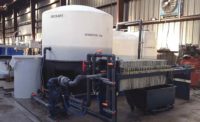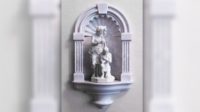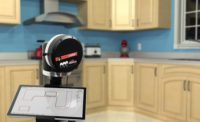Quartzite is one of the hardest natural materials that fabricators will cut for countertops. One of the biggest mistakes Andrew Geronimo, product manager with BB Industries, sees is the incorrect blade being used to make the cuts.
“There are some fabricators out there that will use the same blade on their saw no matter what they are cutting,” said Geronimo. “They will not get great results doing this. The blade won’t cut, or the life of the blade will be reduced. Sometimes they just won’t get through the stone at all. The reason you have to use a quartzite blade specifically is because of the bond that is used between the blade and the diamonds.”
Another important factor with bridge saw blades is the amount of water that is used. “Small blades can be used dry or wet, usually, same with core bits,” said Geronimo. “But with larger blades on the bridge saw, you want to go a bit slower compared to other blades, and you want to use a lot of water. Water is always important. If you’re doing it manually, you also have to make sure you are letting the tool do the work. I see a lot of fabricators trying to force the cut and it causes issues. Let your tools do the work.”
Making cuts in the field
While most fabricators would like to do all the cuts in the shop, there are times that cuts need to be made in the field. “Once again, having a quartzite specific blade is going to help you out a lot,” said Geronimo. “Don’t push the blade too hard or anything. One of the biggest problems in the field is that an installer will use whatever is in his truck, or whatever is already on the saw. Therefore, it’s really important to instruct your installers that they should be switching blades to the proper one and making sure their trucks have all the tools they may need for a job.
“Quartzite can be really difficult to work with,” Geronimo went onto say. “Just take your time with it. I like to tell fabricators to test cuts on a scrap piece at first. It will feel different from your typical stone when you’re cutting it. Test it out, measure your RPMs and feed rates to see what is best for your saw because every saw is different.”



